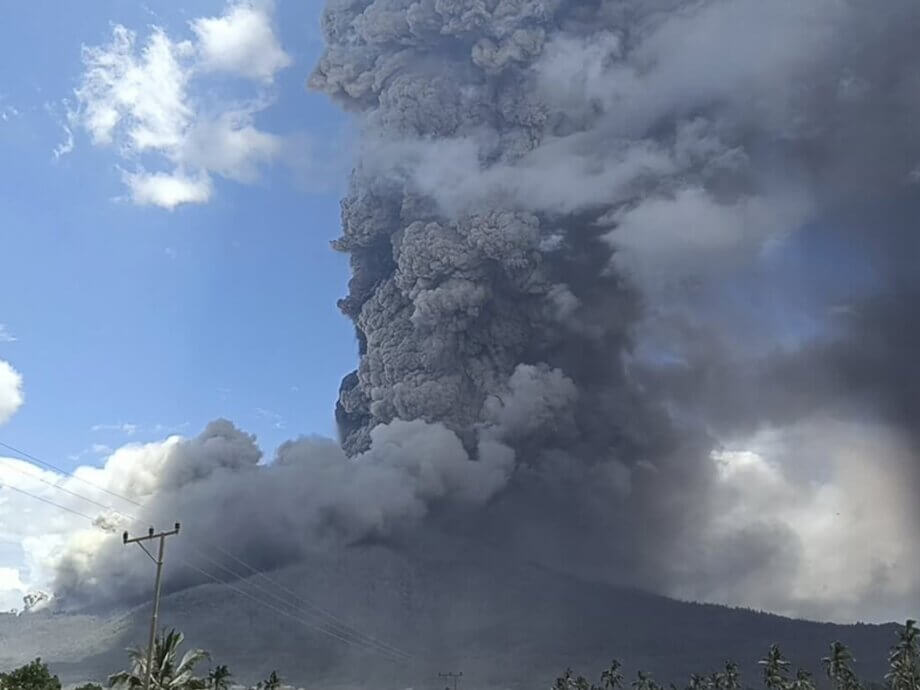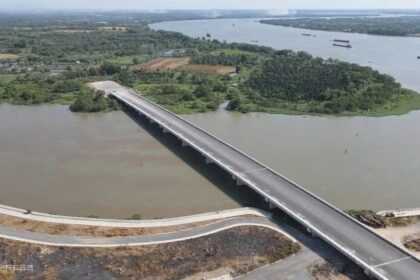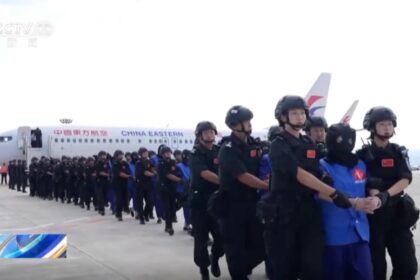Massive Eruption of Mount Lewotobi Laki-Laki Triggers Widespread Flight Cancellations
Travelers to and from Indonesia’s popular resort island of Bali faced major disruptions this week after Mount Lewotobi Laki-Laki, a twin-peaked volcano on the island of Flores, erupted with extraordinary force. The eruption, which began on Tuesday afternoon, sent a towering ash plume up to 11 kilometers (about 6.8 miles) into the sky, prompting authorities to raise the volcano’s alert status to the highest level and triggering the cancellation of dozens of international and domestic flights.
- Massive Eruption of Mount Lewotobi Laki-Laki Triggers Widespread Flight Cancellations
- How the Eruption Unfolded
- Flight Cancellations and Travel Disruptions
- Why Volcanic Ash Grounds Flights
- Evacuations and Local Impact
- Tourism and Economic Implications
- Indonesia’s Volcanic Landscape: A Constant Challenge
- Expert Insights and Official Statements
- Looking Ahead: Monitoring and Preparedness
- In Summary
The eruption’s impact was felt far beyond the immediate vicinity of the volcano, as volcanic ash drifted across air routes connecting Bali to major cities in Australia, Asia, and beyond. The event has once again highlighted the vulnerability of air travel in the region to Indonesia’s frequent volcanic activity, as well as the challenges faced by local communities living in the shadow of active volcanoes.
How the Eruption Unfolded
Mount Lewotobi Laki-Laki, standing at 1,584 meters (5,197 feet), is one of Indonesia’s most active volcanoes. On Tuesday, the volcano erupted at approximately 5:35 p.m. local time, unleashing a massive, mushroom-shaped ash cloud that was visible up to 150 kilometers (93 miles) away. The eruption was followed by several additional bursts, with ash columns reaching up to 5,000 meters (16,400 feet) on Wednesday morning, according to Indonesia’s volcanology agency.
Authorities responded swiftly, expanding the exclusion zone around the volcano to 8 kilometers (5 miles) and evacuating residents from several villages. The National Disaster Mitigation Agency reported that at least one village was evacuated late Tuesday, and ash rain was observed in multiple communities outside the danger zone. Fortunately, there have been no immediate reports of casualties or significant property damage.
Seismic monitoring indicated ongoing volcanic activity, with tremors and eruptions still being detected on Wednesday. The geology agency warned of the potential for lahar floods—dangerous flows of volcanic debris and mud—if heavy rains were to occur, particularly for communities near rivers originating from the volcano.
Flight Cancellations and Travel Disruptions
The eruption’s most immediate and visible impact was on air travel. Bali’s I Gusti Ngurah Rai International Airport, the main gateway to the island, saw at least 32 flights canceled on Wednesday, with some reports indicating the number exceeded 37. The cancellations affected both international and domestic routes, stranding thousands of passengers and causing widespread travel delays.
Among the airlines affected were Jetstar, Virgin Australia, Air India, Air New Zealand, Singapore Airlines, TigerAir, China’s Juneyao Airlines, and several others. Routes to and from Australia, India, Singapore, Malaysia, China, and New Zealand were particularly impacted. Domestic flights, including AirAsia services to Labuan Bajo on Flores, were also canceled.
Despite the cancellations, Bali’s airport remained operational, with airport officials noting that the decision to cancel flights depended on the specific route and airline. Some carriers, such as Jetstar, expressed optimism that the ash cloud would clear by late Wednesday, allowing for the resumption of delayed flights. However, the unpredictability of volcanic ash movement meant that airlines and passengers had to remain flexible.
Airports Closed in Affected Regions
In addition to flight cancellations in Bali, three airports in East Nusa Tenggara province—including Fransiskus Xaverius Seda Airport in Maumere, Soa Airport in Bajawa, and Haji Hasan Aroeboesman Airport in Ende—were temporarily closed to ensure passenger safety. These closures further complicated travel plans for those heading to or from Flores and nearby islands.
Indonesia’s transportation ministry estimated that more than 14,000 passengers were affected by the cancellations and delays. Airlines and airport operators were urged to provide options such as rescheduling, rerouting, or full refunds for those unable to continue their journeys.
Why Volcanic Ash Grounds Flights
Volcanic ash poses a significant hazard to aviation. When a volcano erupts, it can eject fine particles of ash high into the atmosphere, where they can drift for hundreds or even thousands of kilometers. Aircraft flying through ash clouds risk severe engine damage, as the ash can melt inside jet engines, clogging and coating critical components. Ash can also sandblast the exterior of planes, damage cockpit windows, and interfere with navigation and communication systems.
Because of these dangers, international aviation authorities and airlines take a cautious approach, often canceling or rerouting flights when ash clouds are detected along flight paths. The decision to resume flights depends on real-time monitoring of ash movement, weather conditions, and expert assessments from volcanology and aviation agencies.
Evacuations and Local Impact
While the eruption’s most visible effects were on air travel, the local impact on communities near Mount Lewotobi Laki-Laki was also significant. Volcanic ash rained down on several villages, covering streets with thick layers of ash, gravel, and sand. Residents of villages such as Boru, Hewa, Watobuku, and Nurabelen were evacuated to safer locations, with some moving to temporary shelters equipped with basic amenities.
Abdul Muhari, a spokesman for Indonesia’s disaster mitigation agency, reported that at least 450 families from affected villages had settled in temporary housing. Authorities provided face masks to protect residents from inhaling ash and warned of the risk of lahar floods if heavy rains occurred.
Despite the disruption, there were no immediate reports of injuries or fatalities. Local officials credited the swift evacuation and the community’s familiarity with volcanic hazards for minimizing harm.
Tourism and Economic Implications
Bali is one of the world’s most popular tourist destinations, attracting millions of visitors each year. The island’s economy is heavily dependent on tourism, and disruptions to air travel can have significant economic consequences. The latest eruption stranded thousands of holidaymakers, with some forced to extend their stays or seek alternative routes home.
Remdy Doule, a sales worker at a Bali-based travel agency, estimated that more than 1,000 tourists were directly affected by the flight cancellations, particularly those traveling to Bali and the nearby Komodo National Park. Airlines and hotels worked to accommodate stranded passengers, offering rebooking options and additional nights of accommodation where possible.
While the immediate impact was disruptive, most airlines and tourism operators expressed confidence that the situation would normalize once the ash cloud cleared. However, the event served as a reminder of the region’s vulnerability to natural hazards and the importance of contingency planning for both travelers and businesses.
Indonesia’s Volcanic Landscape: A Constant Challenge
Indonesia is home to more than 120 active volcanoes, making it one of the most volcanically active countries in the world. The archipelago sits atop the Pacific “Ring of Fire,” a horseshoe-shaped zone of seismic activity where several tectonic plates meet. This geological setting results in frequent earthquakes and volcanic eruptions.
Mount Lewotobi Laki-Laki is part of a twin-volcano system, with its “female” counterpart, Lewotobi Perempuan, located nearby. The volcano has a history of eruptions, with significant events recorded in March, May, and November of the previous year. The November 2024 eruption killed nine people, injured dozens, and forced thousands to evacuate, as well as causing widespread flight cancellations similar to the current event.
Living with active volcanoes is a fact of life for many Indonesians. Communities near volcanoes are accustomed to evacuation drills and monitoring alerts, but the unpredictability of eruptions means that vigilance is always required.
Expert Insights and Official Statements
Geology agency head Muhammad Wafid emphasized the importance of adhering to safety guidelines, warning residents and tourists to avoid activities within at least 7 kilometers of the volcano’s crater. He also highlighted the risk of lahar floods and urged the use of face masks to protect against ash inhalation.
“The height of the eruption column was observed at approximately 10,000 metres above the summit. The ash column was observed to be grey with thick intensity.”
Wafid’s statement underscores the scale of the eruption and the seriousness with which authorities are treating the ongoing volcanic activity.
Airlines and airport operators also issued statements prioritizing passenger safety. Jetstar, for example, reassured customers that flights would only resume when it was safe to do so, and that affected passengers would be offered rebooking or refunds.
“Safety is always our first priority and we will only operate into and out of Denpasar when it is safe to fly.”
This sentiment was echoed by other carriers, including Air New Zealand and Virgin Australia, as well as by Indonesia’s transportation ministry.
Looking Ahead: Monitoring and Preparedness
As of the latest updates, volcanic activity at Mount Lewotobi Laki-Laki continues to be closely monitored by Indonesia’s volcanology and disaster mitigation agencies. The exclusion zone remains in place, and residents are advised to stay alert for further eruptions or secondary hazards such as lahar floods.
For travelers, the situation serves as a reminder to check flight status regularly, stay informed about local conditions, and be prepared for sudden changes in travel plans when visiting regions with active volcanoes. Airlines and tourism operators in Indonesia have developed protocols for dealing with such disruptions, but flexibility and patience are essential for those affected.
In Summary
- Mount Lewotobi Laki-Laki erupted on Tuesday, sending an ash plume up to 11 kilometers high and prompting the highest alert level.
- At least 32 flights to and from Bali were canceled, affecting thousands of international and domestic travelers.
- Three airports in East Nusa Tenggara province were temporarily closed, and more than 14,000 passengers were impacted.
- Local communities near the volcano were evacuated, with no immediate reports of casualties or major damage.
- Volcanic ash poses serious risks to aviation, leading to widespread flight cancellations as a safety precaution.
- Bali’s tourism industry faced significant disruption, but airlines and hotels worked to accommodate stranded passengers.
- Indonesia’s location on the Pacific “Ring of Fire” means frequent volcanic activity is a constant challenge for residents and travelers alike.
- Authorities continue to monitor the situation, and travelers are advised to stay informed and flexible in their plans.












